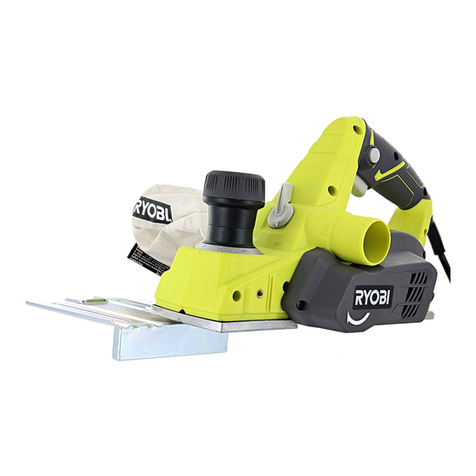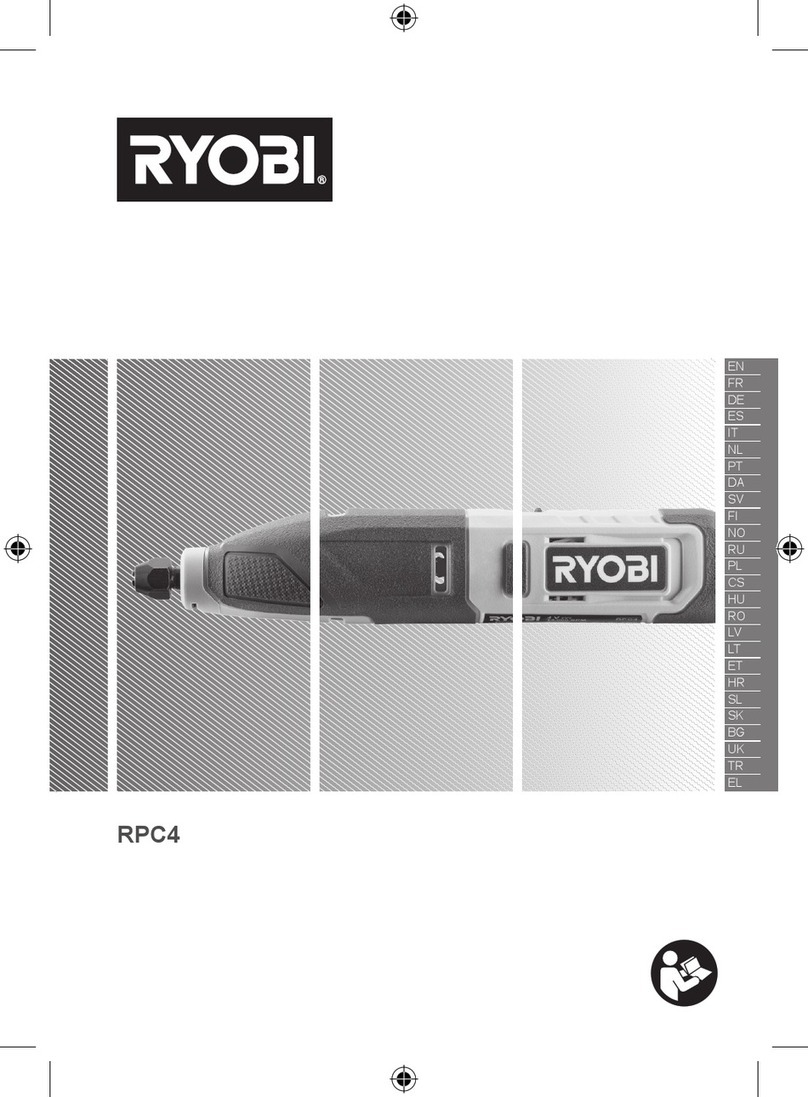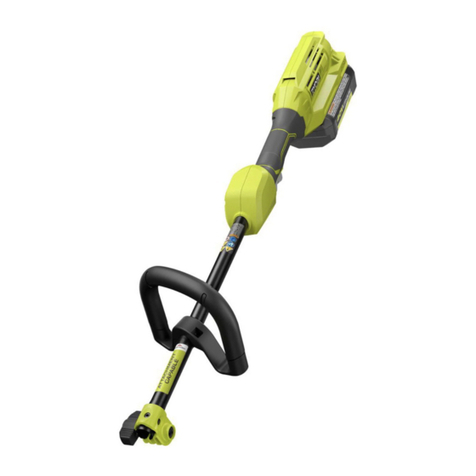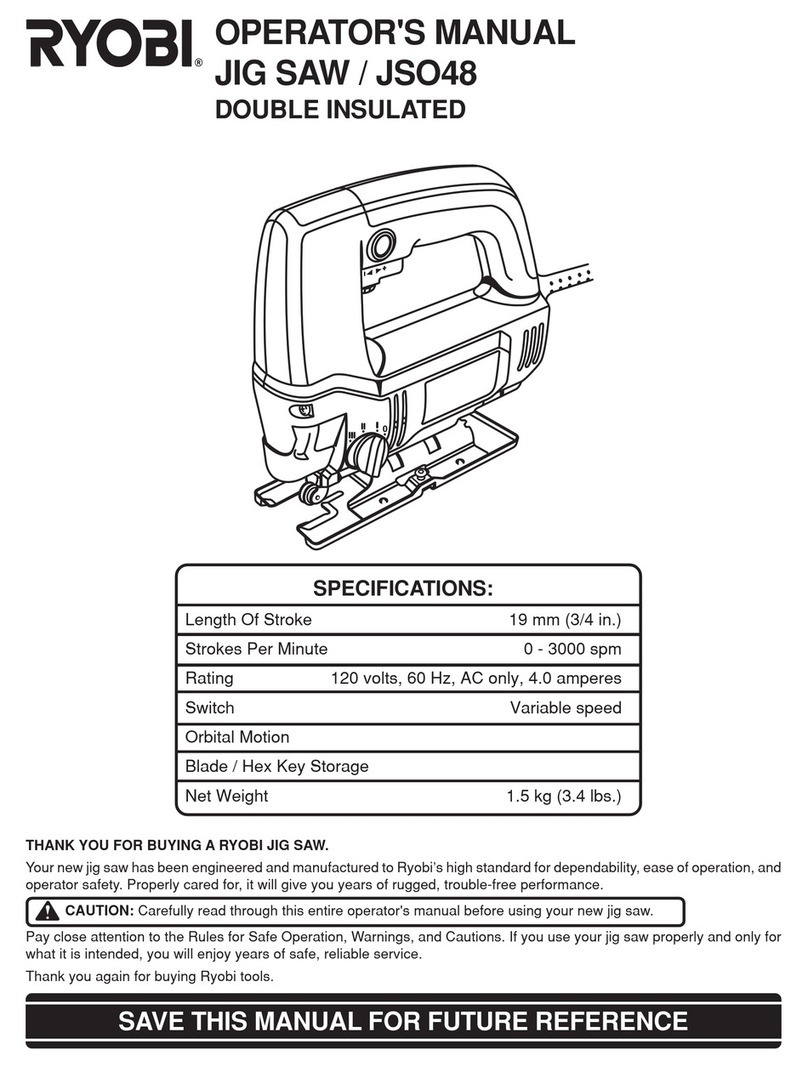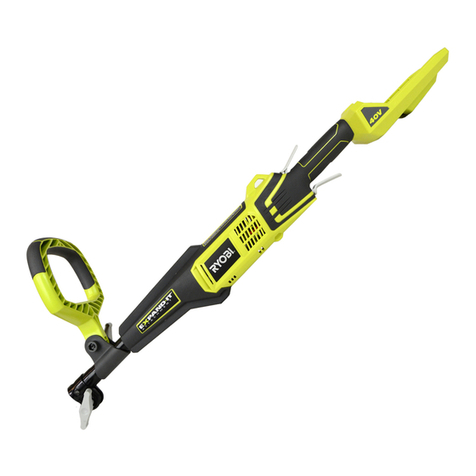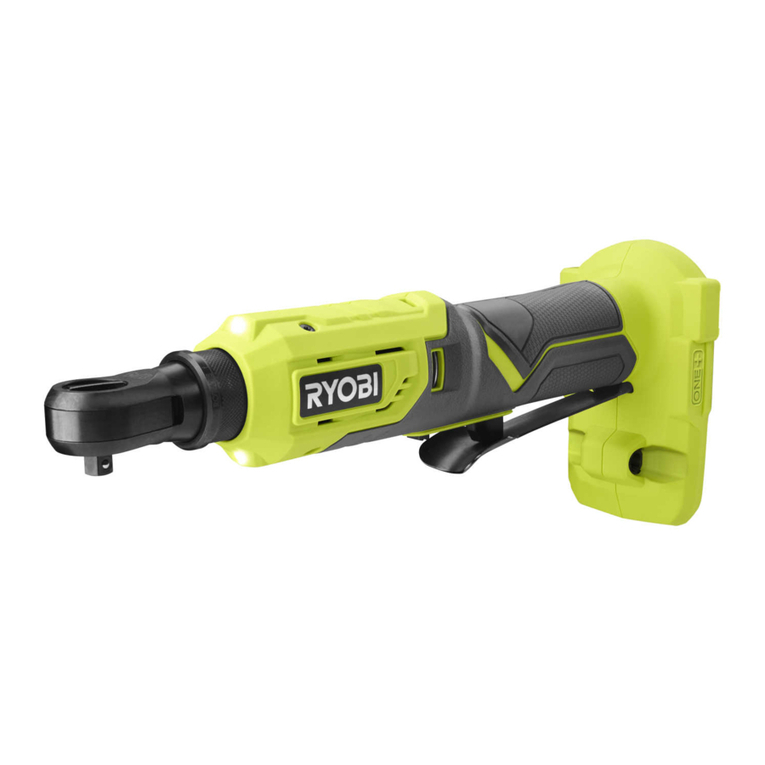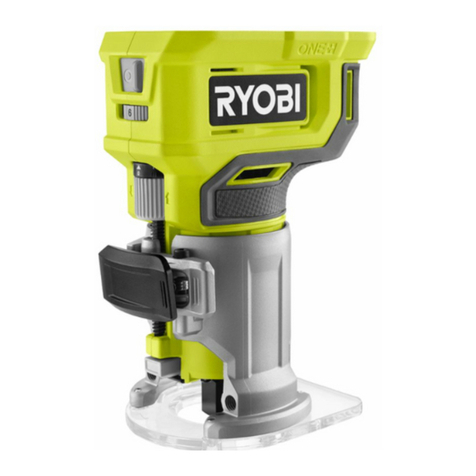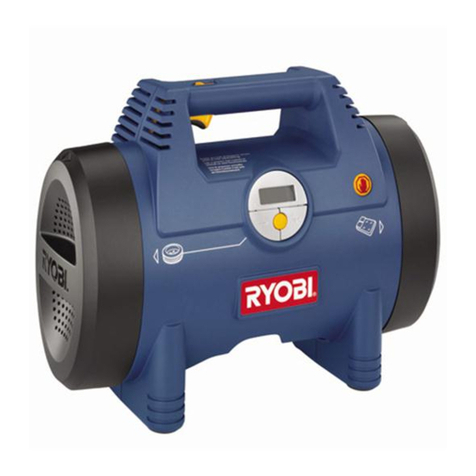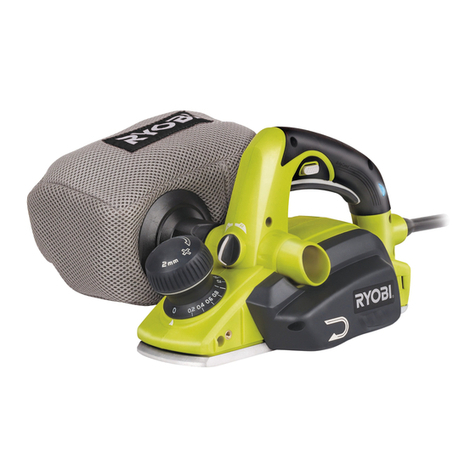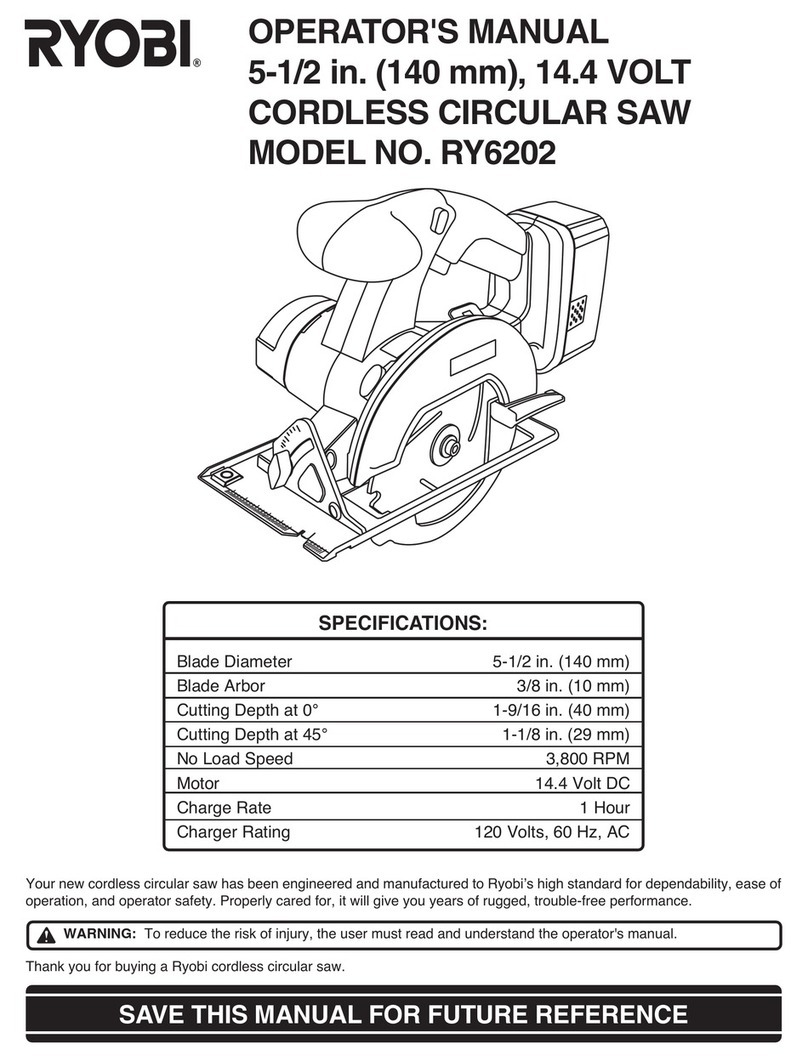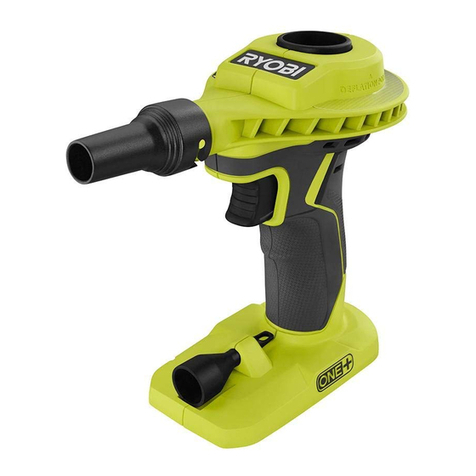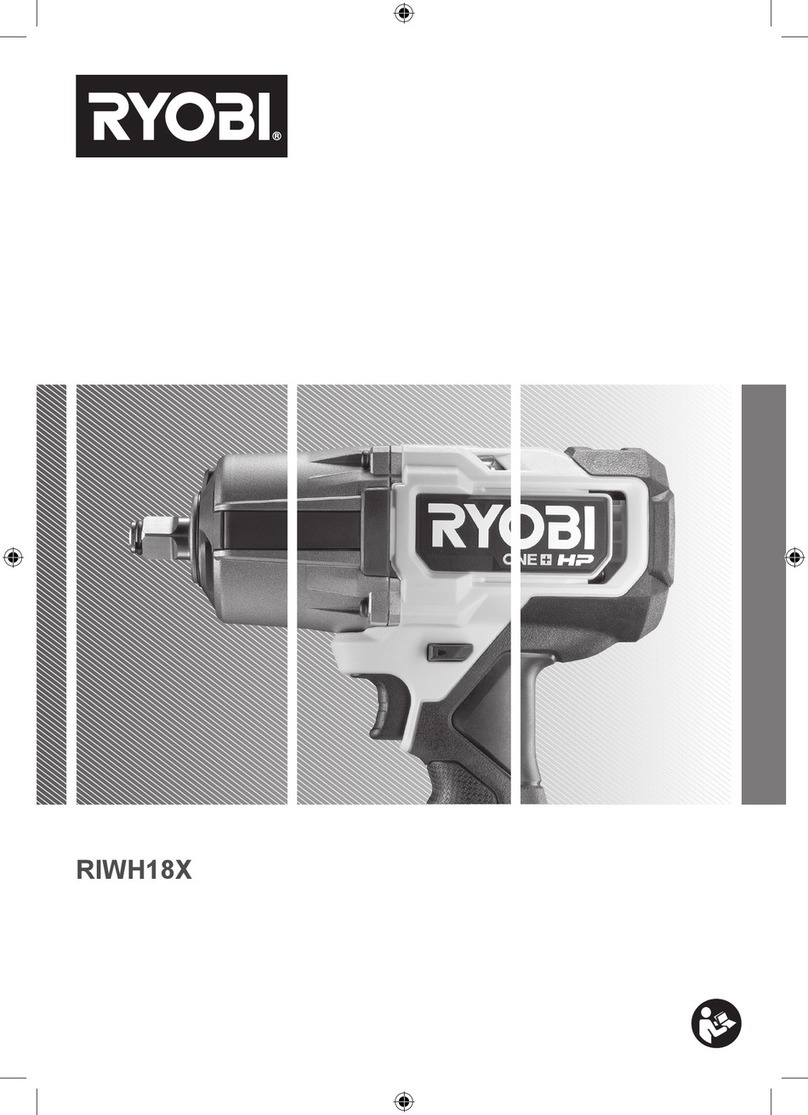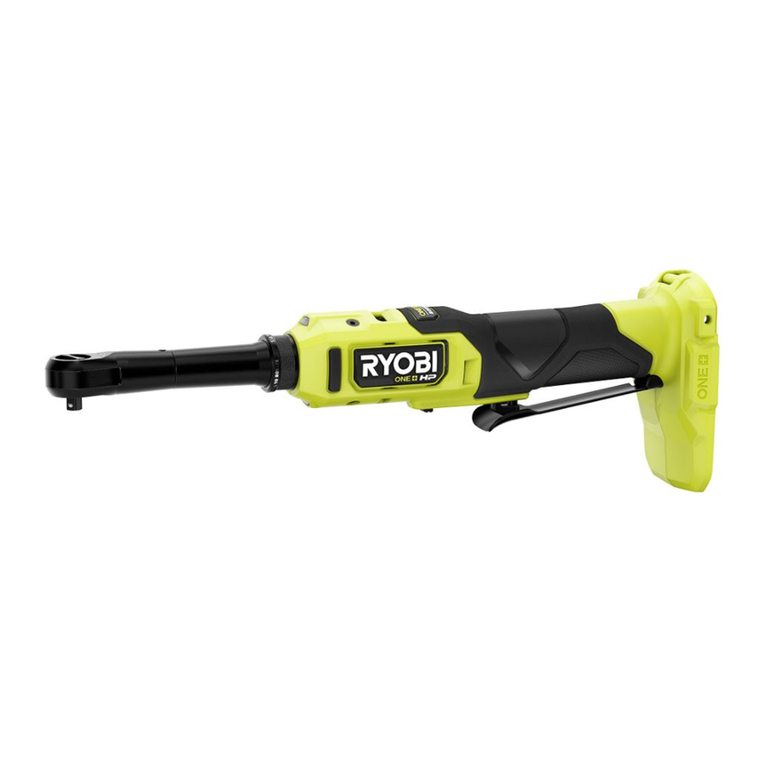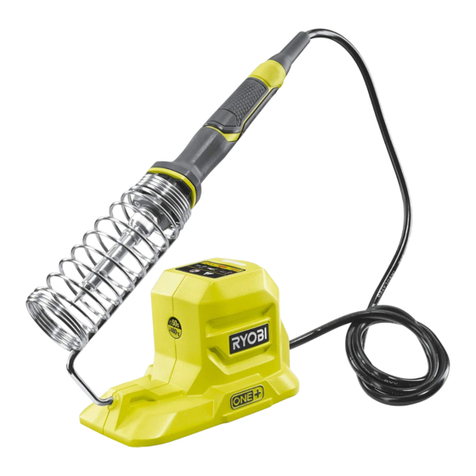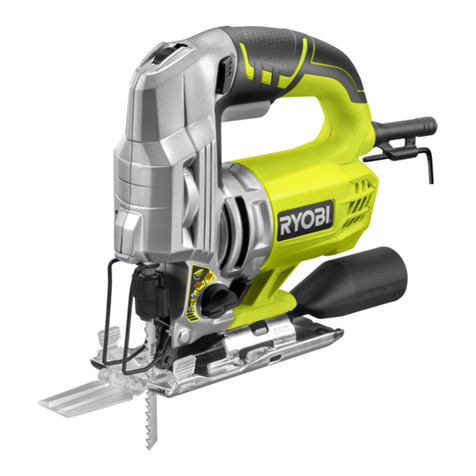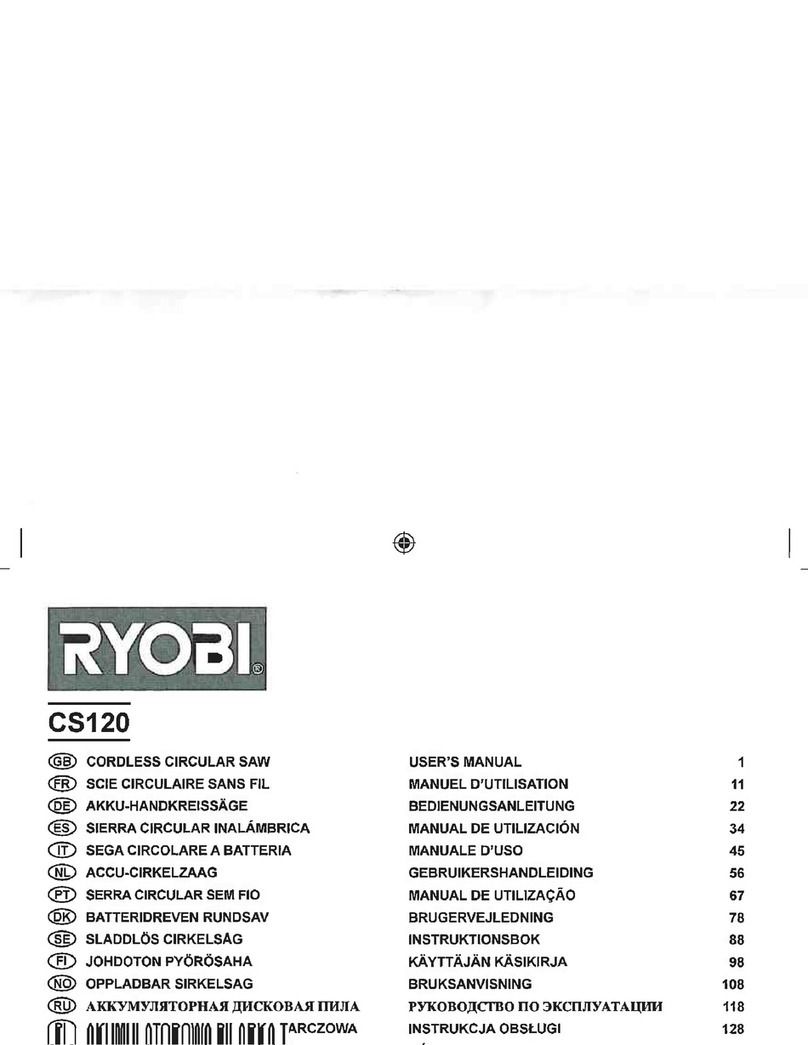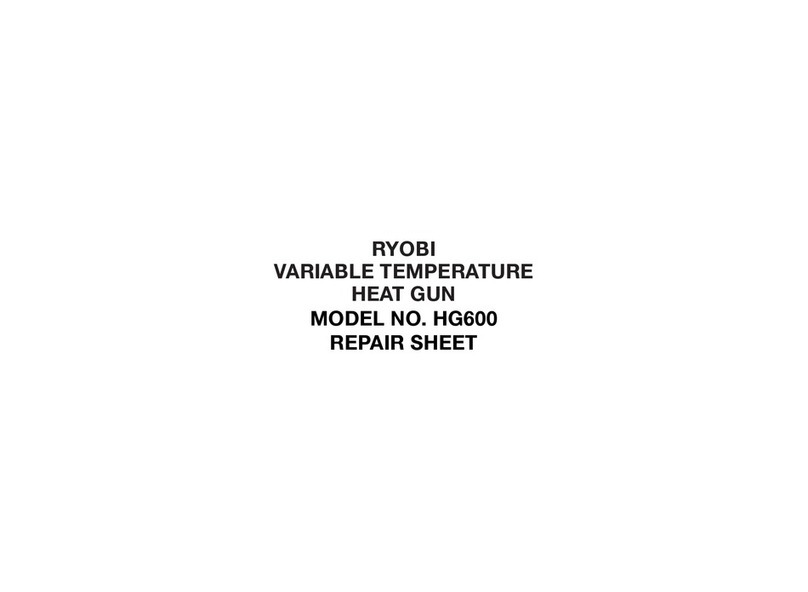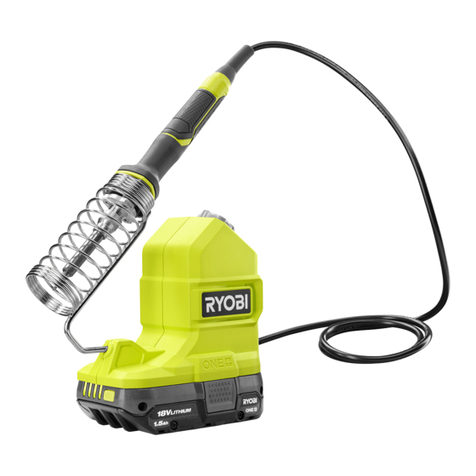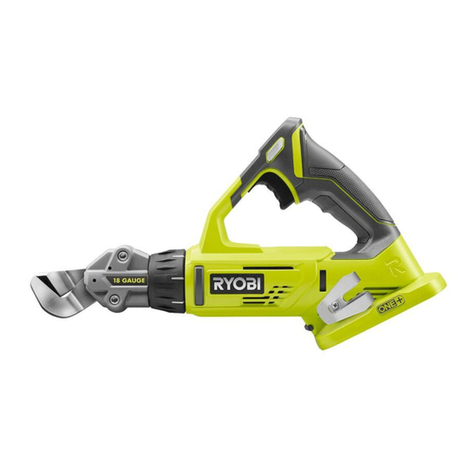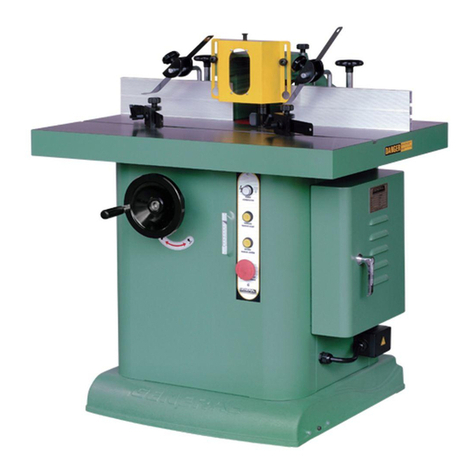
3
back so that you will not be struck when the tension in
the wood fibers is released.
■Maintain product with care. Keep the cutting edge sharp
and clean for best performance and to reduce the risk
of injury. Follow the instructions for lubricating and
changing accessories.
■Keep handles dry, clean, and free from oil and grease.
■Before use and after any impact, check that there are
no damaged parts. Any part that is damaged should be
properly repaired or replaced by an authorised service
centre.
■If the product is dropped, suffers heavy impact, or
begins to vibrate abnormally, immediately stop the
product and inspect for damage or identify the cause of
the vibration. Any damage should be properly repaired
or replaced by an authorised service centre.
■Check damaged parts. Before further use of the
product, a guard or other part that is damaged should
be carefully checked to determine that it will operate
properly and perform its intended function.
■Service on the product must be performed by qualified
repair personnel only. Service or maintenance
performed by unqualified personnel could result in
injury to the user or damage to the product.
■Save these instructions. Refer to them frequently and
use them to instruct others who may use the product.
If you loan someone the product, loan them these
instructions also to prevent misuse of the product and
possible injury.
ADDITIONAL BATTERY SAFETY WARNINGS
WARNING
To reduce the risk of re, personal injury, and product
damage due to a short circuit, never immerse your
tool, battery pack or charger in uid or allow a uid to
ow inside them. Corrosive or conductive uids, such
as seawater, certain industrial chemicals, and bleach
or bleach-containing products, etc., can cause a short
circuit.
TRANSPORTATION AND STORAGE
■Stop the product, remove the battery pack, and allow it
to cool before storing or transporting.
■Clean all foreign material from the product.
■After each use, clean the body and handles of the
product with a soft, dry cloth.
■After each use, clean the debris from the blades with a
stiff brush, and then carefully apply a rust-preventative
lubricant before refitting the blade protector. Use
a recommended rust-preventative lubricant spray
to apply an even distribution and reduce the risk of
personal injury from contact with the blades. For
information about suitable spray product, check with
your local authorised service centre.
■Lubricate the blades lightly before and after use
if necessary using the above method. (Warranty-
approved lubricants: WD-40, INOX, and RP7).
■For transportation in a vehicle, secure the product
against movement or falling to prevent injury to persons
or damage to the product.
■Store the product in a cool, dry, and well-ventilated
place that is inaccessible to children. Keep away from
corrosive agents such as garden chemicals and de-
icing salts. Do not store the product outdoors.
*WD-40 is a trademark of WD-40 Manufacturing Company.
*INOX is a trademark of Candan Enterprises Pty Ltd.
*RP7 is a trademark if Duluxgroup (Australia) Pty Ltd.
TRANSPORTING LITHIUM BATTERIES
Transport the battery in accordance with local and national
provisions and regulations.
Follow all special requirements on packaging and labelling
when transporting batteries by a third party. Ensure that
no batteries can come in contact with other batteries
or conductive materials while in transport by protecting
exposed connectors with insulating, nonconductive caps or
tape. Do not transport batteries that are cracked or leaking.
Check with the forwarding company for further advice.
MAINTENANCE
WARNING
Use only original manufacturer’s replacement parts,
accessories, and attachments. Failure to do so can
cause possible injury, contribute to poor performance,
and may void your warranty.
WARNING
Before inspecting, cleaning, or servicing the product;
stop the motor, wait for all moving parts to stop, and
remove the battery. Failure to follow these instructions
can result in serious personal injury or property damage.
WARNING
Servicing requires extreme care and knowledge
and should be performed only by a qualied service
technician. For service, bring the product to an
authorised service centre for repair. When servicing, use
only original replacement parts.
■Switch off and remove the battery pack before
conducting any maintenance or cleaning work.
■You may make adjustments and repairs described in
this manual. For other repairs, contact an authorised
service centre.
■After each use, clean the product with a soft, dry cloth.
Any part that is damaged should be properly repaired or
replaced by an authorised service centre.
■Check all nuts, bolts, and screws at frequent intervals
for proper tightness to ensure that the product is in safe
working condition.
■Avoid using solvents when cleaning plastic parts. Most
plastics are susceptible to damage from various types
